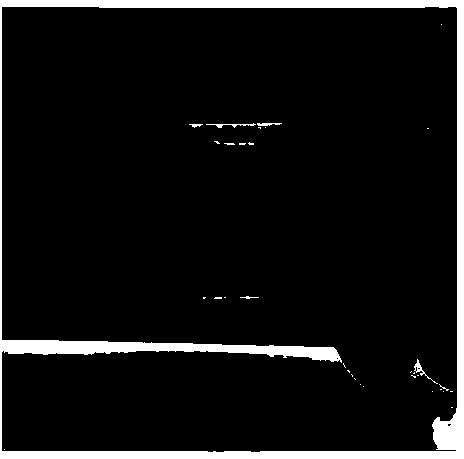Fibroin medical biological adhesive and preparation method thereof
A bio-adhesive, silk fibroin technology, applied in pharmaceutical formulations, surgical adhesives, applications, etc., can solve the problems of low adhesive strength, long coagulation time, troublesome storage, etc., to achieve super adhesion performance, good Biocompatible, easy-to-use effect
- Summary
- Abstract
- Description
- Claims
- Application Information
AI Technical Summary
Problems solved by technology
Method used
Image
Examples
Embodiment 1
[0018] Preparation of silk fibroin solution
[0019] After heating 2L of deionized water to boiling, add 6 g of sodium carbonate and wait until it is fully dissolved. Put 5 g silkworm raw silk into it, and degummed it at 100 °C. Wash thoroughly with deionized water and dry in an oven at 60 °C. The dried degummed silk fibroin fibers were dissolved in LiBr solution at 60 °C for 6 h. The dissolved solution was put into a dialysis bag and dialyzed against deionized water for 72 h. The dialyzed solution was filtered and centrifuged to obtain a silk fibroin solution with a mass fraction of about 20% after repeated twice. 10 g of catechol was dissolved in slightly alkaline Tris-HCl buffer and stirred for 0.5 h to obtain a 10% catechol solution. At room temperature, 10% catechol solution and 20% silk fibroin solution were uniformly mixed for 0.5 h at a mass ratio of 800:1 to obtain a silk fibroin adhesive with adhesive properties. The adhesive can be used for hemostatic adhesion ...
Embodiment 2
[0021] After heating 10L of deionized water to boiling, add 50g of sodium carbonate and wait until it is fully dissolved. Put 25 g silkworm raw silk into it, and degumming process at 90 °C. Wash thoroughly with deionized water and dry in an oven at 50 °C. The dried degummed silk fibroin fibers were dissolved in LiBr solution at 80 °C for 3 h. The dissolved solution was put into a dialysis bag and dialyzed against deionized water for 60 h. The dialyzed solution was filtered and centrifuged to obtain a silk fibroin solution with a mass fraction of about 40% after repeated twice. 500 g of tannic acid was dissolved in slightly alkaline Tris-HCl buffer and stirred for 50 h to obtain a 500% tannic acid solution. At room temperature, a 500% tannic acid solution and a 40% silk fibroin solution were uniformly mixed for 30 h at a mass ratio of 1:1 to obtain a silk fibroin adhesive with adhesive properties. The adhesive can be used for hemostatic adhesion of organs, bones, joints and...
Embodiment 3
[0023] After heating 15L of deionized water to boiling, add 100 g of sodium carbonate and wait for it to fully dissolve. Put 15 g silkworm raw silk into it, and degummed it at 80 °C. Wash thoroughly with deionized water and dry in an oven at 70 °C. The dried degummed silk fibroin fibers were dissolved in a calcium chloride / absolute ethanol / water ternary solution at 60°C for 6 h. The dissolved solution was put into a dialysis bag and dialyzed against deionized water for 40 h. The dialyzed solution was filtered and centrifuged to obtain a silk fibroin solution with a mass fraction of about 5% after repeated twice. Dissolve 1 g of epicatechin in water and stir for 30 h to obtain a 1% epicatechin solution. At room temperature, a 1% epicatechin solution and a 5% silk fibroin solution were uniformly mixed for 50 h at a mass ratio of 1:600 to obtain a silk fibroin adhesive with adhesive properties. The adhesive can be used for hemostatic adhesion of tissues such as nerves, muco...
PUM
| Property | Measurement | Unit |
|---|---|---|
| Quality score | aaaaa | aaaaa |
Abstract
Description
Claims
Application Information
 Login to View More
Login to View More - R&D
- Intellectual Property
- Life Sciences
- Materials
- Tech Scout
- Unparalleled Data Quality
- Higher Quality Content
- 60% Fewer Hallucinations
Browse by: Latest US Patents, China's latest patents, Technical Efficacy Thesaurus, Application Domain, Technology Topic, Popular Technical Reports.
© 2025 PatSnap. All rights reserved.Legal|Privacy policy|Modern Slavery Act Transparency Statement|Sitemap|About US| Contact US: help@patsnap.com

